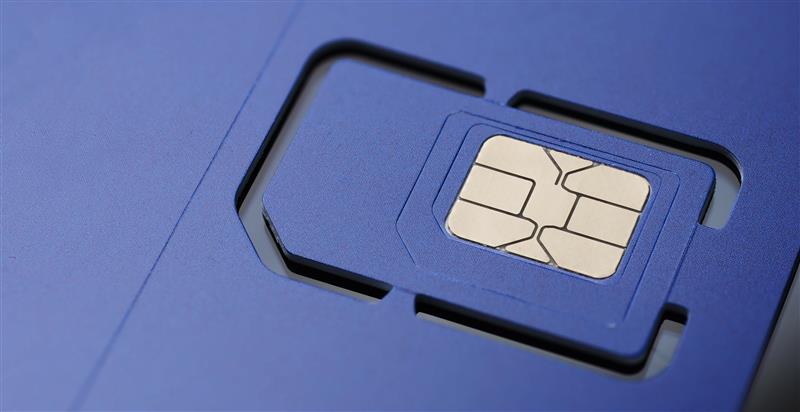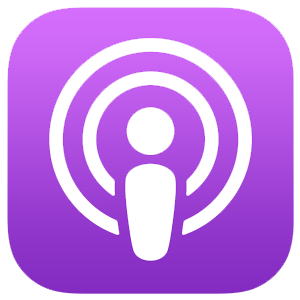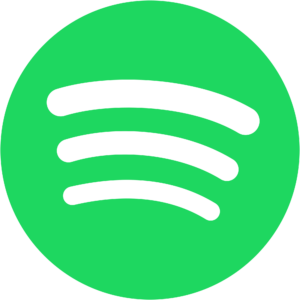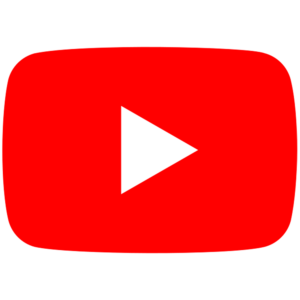When transporting refrigerated goods across South America, it is essential to have a reliable cold chain management solution.
In Brazil, where 30% of transported cargo requires precise temperature control, a single point of failure can result in losses worth millions.
Neokohm CTO Luis Lorenzi joins this Portuguese podcast special to explain how his company revolutionized cold chain monitoring with IoT technology, including:
- How they automated temperature control to eliminate driver responsibility
- Why multi-carrier connectivity proved crucial for cross-border operations
- How their system monitors refrigeration units across Brazil’s challenging terrain
- What the future holds for cold chain monitoring with AI integration
Tune in to discover how Neokohm and Eseye partnered to create seamless connectivity solutions that work across nine South American countries—even in remote regions where trucks transfer cargo to river barges—without changing SIM cards.
The video below has been translated and subtitled for English speakers.
Subscribe to IoT Leaders
Transcript
Intro:
You are listening to IoT Leaders, a podcast from Eseye that shares real IoT stories from the field about digital transformation, lessons learned, success stories, and innovation strategies that work.
Ana Carolina Bussab
Hi everyone, this is IoT Leaders. Welcome to the second episode focused on our Brazil operations. We’re very excited to share more about Neokohm — one of our major and most valued customers. This is Luis from Neokohm.
The interview will be in Portuguese, and we’ll have subtitles. So don’t worry if you’re an English speaker — we want you to learn more about how things work in Brazil too. Now I’ll change to Portuguese. I hope you enjoy this episode!
How are you Luis?
Luis Lorenzi
All good thank you and you?
Ana Carolina Bussab
Yes good thanks. Thank you for accepting our invitation to be part of this episode, where we’ll talk about operations in Brazil — a real breeding ground for new technologies.
We’re working with you on a very interesting project that will surely inspire many companies looking to invest in this sector. So I’ll start with a quick introduction.
Neokohm is an Eseye client and offers a complete end-to-end solution for the cold chain. But just saying that might sound a bit vague, so I’ll pass the mic to Luis, who’ll explain what this cold chain visibility really means, and why it’s considered end-to-end. Tell us, Luis.
Luis Lorenzi
Ana, first I want to thank you for the invitation and the opportunity. It’s really gratifying to be here, sharing a bit about our journey and the work we’ve been doing — always aiming to add value to people’s lives.
Neokohm was founded in 2016. I’m Luis, co-founder of the company, and it all started in one of the partners’ garages. We began by developing some electronics projects focused on agribusiness, which was our focus at the time. That’s where we took our first steps in product development — quite different from what we do today — but that phase was crucial for gaining knowledge and experience.
Early on, we were approached by a local agribusiness company from Chapecó, Santa Catarina.
They wanted better visibility over the cold chain — to identify failures and understand what parts of the food distribution process needed improvement.
Before Neokohm, the responsibility for configuring and adjusting the refrigeration equipment was on the truck driver. They had to set the right transport parameters — for example, whether they were carrying apples or frozen meat, since each product requires specific conditions. That opened the door to many possible errors.
That’s when Neokohm came in — automating the process, removing the driver’s responsibility, and centralizing control. Today, we manage transport with an integrated hardware and software solution, which we call Connect. Eseye is a key partner in prototyping this equipment.
We currently serve major shippers and logistics operators who use our solution for real-time visibility and to make data-driven decisions.
Ana Carolina Bussab
That’s awesome!
You mentioned that Neokohm started in 2016, in one of the founders’ garages. I love that story — it reminds me of another famous company that started in a garage… you know, the one with the little apple!
I truly hope Neokohm grows just as much and becomes a major reference in the market.
You explained how the responsibility moved from the driver to an automated system. That must have really improved the process — drivers already have so much to deal with, and now even more with things like video telematics. So not only does this reduce costs — since there’s no longer a need to train the driver — it also improves safety.
If the system isn’t using the right setting, you can change it remotely. The driver doesn’t have to pull over, get out, and adjust it manually. That’s a game changer — and in a country like ours, where road freight is so crucial, it makes a big difference.
Let me ask you something: I see in my notes that you’ve been working with us for about 2 or 3 years, but the story goes back a bit further, right?
Luis Lorenzi
Exactly. As I mentioned earlier, we used to work on different projects and products. When this challenge came up, we didn’t know anything about connectivity, telemetry, or temperature control. So we dove into research — studying, learning, and figuring out how to build the product we have today.
That’s when we realized we needed a connectivity provider. And we all know Brazil is not the easiest place in that regard — we have several telecom operators, and many regions are challenging for companies that rely on connectivity.
We found Eseye through another hardware supplier here in Brazil — Santec — who recommended them to us. That’s how we started using their services. The key point was: we didn’t want to rely on just one operator. We needed equipment that could work across different layers, with different carriers and technologies.
Back in 2016, when we first started, the landscape was completely different — we were talking about 2G connectivity. Today, the market has changed a lot. We’re actually in the process of migrating from 2G to 4G.
It’s been a big shift in a short time. Eseye has been with us from the very beginning. They were our first provider, and we still work with them today — we use their connectivity in every single device we produce.
Talking a bit more about our operation: our solution is 50% hardware and 50% software. On the hardware side, we wanted something really robust, because once you install a device in the field, you may not have physical access to it for updates or maintenance.
So from day one, we focused on developing reliable equipment — something that would perform well in the field and wouldn’t cause issues in terms of connectivity or operation.
To emphasize this point, I brought a stat about our market, just looking at Brazil: over 30% of all cargo transported here is refrigerated — including food, medicine, and other sensitive goods.
And considering how much Brazil relies on road transportation, that 30% represents a huge volume of goods. Our solution gained real market traction because it significantly reduces the risk of losses.
With our system, the driver no longer has to worry about whether the refrigeration is working properly. We monitor everything — temperature settings, electromechanical failures, fuel levels — and we can even configure the device remotely.
For example, if a truck just finished transporting meat and now it’s going to carry fruit, it can be reconfigured automatically, without needing anyone on-site to do it manually.
And like you said — these are essential goods. We’re talking about food and medicine, which require strict safety standards. The manufacturer needs to be confident the cargo will arrive in ideal conditions.
Ana Carolina Bussab
Now tell me — you mentioned fuel earlier. How does that fit into your solution? Because when we think of vehicle tracking in Brazil, that’s quite common, but your system goes way beyond that.
Tell us a bit — not everything, of course — but what you can share about what’s inside this equipment.
Because the device, right, if we look at Brazil, we know that there is a lot of vehicle tracking. Yours goes far beyond vehicle tracking. Tell me a little about it, maybe not everything, but what is included in this equipment that certainly had a partnership here at Eseye, right, to develop this equipment, for it to work properly.
Tell me whatever you can tell, of course. Perfect. What is the magic? What’s in there? What is this equipment? What information does this equipment provide, right, end to end?
Luis Lorenzi
Perfect! We started by developing our solution for transportation. Then we expanded to other cold chain stages — like warehouses and distribution centers. But transportation has always been our main focus.
The challenge? Vehicles are constantly moving through different regions and networks. So we need a solution with high connectivity volatility. That’s why our product uses proven, reliable technologies.
We like to joke: the end customer doesn’t care about the hardware. What matters is the software — they want to know where the vehicle is and the current temperature.
1We operate in Brazil, especially in the North, like Manaus. There, transport is part road, part river. The truck goes to a certain point, then the trailer continues on a barge.
This brings a challenge: most tracking systems monitor the tractor (the front of the truck). But once it’s detached, how do you track the trailer on the barge?
That’s where our solution comes in. We focus entirely on the trailer, not the tractor. We monitor the trailer’s entire refrigeration system.
Think of it like a powerful A/C unit inside the trailer. It runs on a combustion engine — so it needs fuel, the right settings for the cargo, and a maintenance plan to prevent failures during the journey.
Today, we handle goods worth from R$100,000 to over R$1 million. We serve both low-value cargo and highly demanding shippers. Some clients have extremely high standards — especially for temperature control.
Our solution must provide visibility to everyone involved. That’s how we exceed expectations and deliver with excellence. We achieve this through multi-carrier connectivity — never relying on just one.
Today, we operate in Brazil and 8 other South American countries.
Ana Carolina Bussab
It’s amazing to see a chip bought in Brazil work automatically abroad. The truck crosses the border and keeps transmitting — no action needed.
This has worked really well. It builds trust, brings comfort, and simplifies distribution. It’s a universal device — it works in the Northeast, Argentina, Uruguay…
Clients can start with national operations today, and go international tomorrow — using the same equipment. No chip swap, no field changes.
We’re constantly learning about connectivity in South America. There are shadow zones and tough regions.That’s why we work with trusted partners to ensure end-to-end quality.
Luis Lorenzi
We’ve improved both quality and cost. You buy 20MB and it works almost anywhere in South America — only French Guiana is out.
Doesn’t matter if you’re in Brazil, Uruguay, Paraguay, Argentina, Colombia, or Bolivia.
1We’re constantly learning about connectivity in South America. There are shadow zones and tough regions.That’s why we work with trusted partners to ensure end-to-end quality.
As a result, we’ve reduced support requests and connectivity issues. Today, we’ve reached a high level of excellence — and most importantly: the customer is happy.
It’s a major differentiator.
Ana Carolina Bussab
And just to pitch our value: do you pay more for this?
You don’t pay anymore, right? This is really cool, this is something that I’m very proud of that we can provide this in Brazil, because I see it as not only an improvement in quality, but also in cost.
And when we improve in cost, you know, you buy 20MB from us, and those 20MB include almost all the countries in South America. We just don’t include French Guiana.
And, it doesn’t matter if you travel through Brazil, if you travel through Uruguay, Paraguay, Argentina, Colombia, Bolivia, you have control of your operation. You have your 20MB there and you know how much you will spend at the end of the month.
You have full control of the operation — and cost predictability. This is essential for Brazilian entrepreneurs. As founders, you know how hard it is to manage finances in Brazil.
So, thank you for sharing this with us, it’s something that I’m very happy to hear this feedback on because it’s a big difference, right?
Today, there are over 800 Eseye networks worldwide, with 23 signal-owning carriers. I emphasize “signal-owning” because many people use the term loosely. We’re learning a lot about connectivity — and from our clients too. That close contact helps us understand pain points and build real solutions.
Neokohm is a key partner on this journey. Every time a Neokohm ticket comes in, the team stops and pays attention. You raise red flags that help us improve.
That’s how we discovered NB-IoT cases with signal but no data flow. Some carriers forget to activate the network! This exchange with you improves our real connectivity.
We talked a lot about connectivity today — And I think it opened a lot of eyes. It’s great to show how Eseye truly works with broad, real networks.
Now I want to know: What’s new in the market? What are you seeing in the cold chain?
In our last podcast, we talked about vehicle tracking, video, AI… And at Neokohm, what’s emerging?
How can we keep innovating together?
Luis Lorenzi
We learn a lot from our clients. And the bar keeps rising. Consumers are more critical — they want to know where food comes from, how it was transported…
This behavior raises the bar across the entire supply chain. From raw materials to delivery at the supermarket.
The entire chain is affected — from raw materials to the factory, from distribution centers to the supermarket. And that’s why we’ve expanded our presence.
We started out focused on road transport — and that’s still our core — but we’ve grown into warehouses and factories, offering temperature monitoring solutions.
We’re also stepping into last-mile delivery — tracking food all the way to the end consumer, whether in supermarkets or urban deliveries.
We also serve sectors like pharmaceuticals, which have much more critical demands. We’re always evolving to meet these requirements.
Looking ahead, one of our priorities is to update our base that still runs on 2G — migrating to more modern technologies.
We’ve already seen regions where 2G is starting to fail. Many customers still rely on that infrastructure, so we’re working with them to plan the best way to migrate.
It’s not like updating software — it’s a complex operation that requires careful planning and execution.
We’re also adding new features for end users — using AI, exploring different connectivity options, and adapting devices to the specific conditions of each region.
Our goal is for devices to work as efficiently as possible. And with your support, that’s becoming more and more achievable.
And we’ve also been bringing more features and tools that can add value to the end customer, right? Listening to the customer on a daily basis, understanding their needs and bringing the challenges in-house, understanding how we can solve the challenge and implementing it in practice, right, getting our hands dirty to deliver the solution to the customer, right?
So using artificial intelligence tools, using different types of connectivity, testing different types of options for regions where my equipment works best, what is the characteristic of the equipment in that region it operates, we adapt the equipment, so that it is updated and works in the best possible condition, right?
Ana Carolina Bussab
Replacing the equipment benefits everyone: the client loses less data, we gain reliability, and you get to work with the latest technology.
We still hear: “But 2G still works.” Sure — but what happens when it doesn’t? The shutdown is happening quietly. From one day to the next, coverage in a region just disappears.
So to Neokohm — and to any Eseye clients listening — count on us. We’re ready to help with this transition. It’s a joint investment.
Luis, our time is running out. Thank you for sharing so much insight into the Brazilian market and its challenges.
In a country as vast as ours, we have to be creative and find solutions that truly work.
Working in Brazil prepares anyone to operate globally — there’s no more challenging country out there.
I hope this partnership keeps growing, and that soon we’ll record another episode with even more updates for our clients. Sharing information is key to strengthening the entire market.
I find it very interesting and I think sharing this information is extremely important for the market in general.
Luis Lorenzi
On behalf of Neokohm, thank you for this partnership — and for your team’s patience. Sometimes we send in tickets that are just questions, and your engineers always take the time to explain everything clearly.
We learn a lot from you. Sometimes I don’t grasp it all at first, but I keep learning!
Ana Carolina Bussab
And I always end up asking: “Okay, but in practical terms?” Because the engineers bring so much information, so much knowledge, that sometimes I’m like, “Explain it to me like I’m five!” (laughs) I even confirm: “So it’s this, this, and this, right? Got it?” Because sometimes it’s just a simple question…
And they love sharing a ton of information — which is amazing, super enriching! But I’ll admit, sometimes I’m left with a big question mark on my face too. Luis, if that ever happens to you — even if less than it does to me — don’t hesitate to ask: “Okay, but what does this change in practice?”
Because sometimes it’s not our technical field — and we need to translate it into real-world terms: what do we tell the client? What’s the actual difference between one option and the other?
Luis Lorenzi
Absolutely! We’re always learning. And when we get feedback that’s more technical and well-grounded, it really helps us understand and apply it in our daily work.
Sometimes I think, “Hey, I got an email about this a while ago.” And that helps a lot — not just for me, but for the whole technical team.
Our entire team here is also very grateful for your support and help.
Ana Carolina Bussab
We’re very grateful for all your support. Our entire technical team appreciates everything you do. Thank you, thank you so much, Luis.
Well, that wraps up our episode. This is our podcast for today — we hope you enjoyed it! This is IoT Leaders with Luis from Neokohm and me Ana Carolina at Eseye Brazil. Thank you very much for watching and joining us. We hope you enjoyed. Have a great week.
Outro
You’ve been listening to IoT Leaders, featuring top digitization leadership on the frontlines of IoT. We hope today’s episode has sparked new ideas and inspired your IoT and digital transformation plans. Thanks for listening. Until next time!

Speed up deployment with a free IoT SIM trial and device assessment kit.
Predictable performance is the key to IoT success. Let our experts test your device for free. Receive a free trial IoT SIM trial kit and speed up your IoT deployment with expert insights and seamless connectivity.


